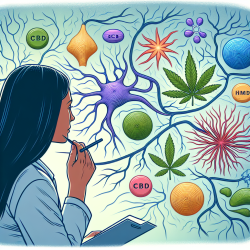Unlocking the Power of Herbs: Kaempferol and Quercetin in Cognitive Enhancement
In the quest for innovative treatments for Alzheimer's Disease (AD), recent research has shed light on the potential of kaempferol and quercetin, two flavonoids found in a variety of herbs. These compounds are gaining attention for their neuroprotective properties, which could be transformative not only for AD patients but also for enhancing cognitive function in children.
The Science Behind Kaempferol and Quercetin
Kaempferol and quercetin are polyphenolic compounds that exhibit antioxidant, anti-inflammatory, and neuroprotective effects. According to a comprehensive review published in Biology (Basel), these flavonoids can modulate molecular pathways associated with AD, such as the PI3K/AKT signaling pathway, which is crucial for maintaining neuronal health and function.
Implications for Practitioners
For practitioners working with children, especially those with cognitive and speech challenges, integrating knowledge of these compounds into therapy could be beneficial. Here’s how:
- Enhancing Cognitive Function: By incorporating dietary sources rich in kaempferol and quercetin, practitioners can potentially support cognitive development and neuroplasticity in children.
- Reducing Inflammation: These flavonoids help reduce neuroinflammation, which is often linked to cognitive impairments.
- Supporting Neuroprotection: The antioxidant properties of these compounds protect against oxidative stress, a key factor in neurodegeneration.
Encouraging Further Research
While the current findings are promising, further research is essential to fully understand the implications of kaempferol and quercetin in cognitive therapy. Practitioners are encouraged to explore the potential of these compounds in clinical settings, possibly in conjunction with traditional therapies.
For those interested in diving deeper into the research, the original study provides a wealth of information on the mechanisms and potential applications of these flavonoids in treating AD. Polyherbal and Multimodal Treatments: Kaempferol- and Quercetin-Rich Herbs Alleviate Symptoms of Alzheimer’s Disease.
Conclusion
Integrating natural compounds like kaempferol and quercetin into therapeutic practices could offer new avenues for enhancing cognitive function and speech outcomes in children. By staying informed and exploring these natural options, practitioners can contribute to more effective and holistic therapy approaches.










